Warbird – Tail Wheel Conversion & differences training
Warbird – Tail Wheel Conversion & differences training – £335.00 per hour wet inc vat airborne
Your training will be conducted at our flying school at Fenland airfield in our Korean war veteran Auster AOP 6. Training in the Auster will test your skills and challenge you, as this aircraft is feisty! If you can fly an Auster AOP 6, you will have the skills to fly most GA tail draggers! Our bespoke course is at least 5 hours; we believe this is the minimum training required to fly the Auster AOP 6 to solo standard.
After the 5 hours, any continuation flying shall be at the £320.00 per hour wet rate.
You will have a thorough ground school followed by the below syllabus found in CAP 804
- Physical differences;
- Loading and Effect of CG Position.
- Dynamic differences and handling during:
- Ground handling;
- Starting and taxying;
- Taking-off;
- Engine failure during take-off;
- Landings including 2-point “Wheelers” and 3-point landings (as applicable to type);
- Crosswind operations;
- Parking and mooring.
The full syllabus can be found in Cap 804 Part I Section 4 Part H, Subpart 1, Page 10
Helpful notes can be found here: FAA Tail wheel conversion notes
Contact us directly for this course at – Admin@T6Harvard.com
AUSTER AOP 6 INTRO FLIGHTS – £170:00:
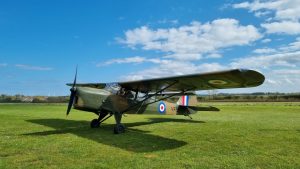 Fly in our genuine Korean War veteran: We are pleased to announce the arrival of our Korean War veteran AOP 6 Auster aircraft. We now offer introductory flights in the iconic Auster from our base at Fowlmere or Peterborough.
Fly in our genuine Korean War veteran: We are pleased to announce the arrival of our Korean War veteran AOP 6 Auster aircraft. We now offer introductory flights in the iconic Auster from our base at Fowlmere or Peterborough.
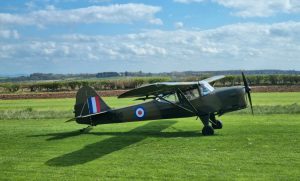 This aircraft was famous for its slow flight, which allowed artillery spotters to spot the impact of artillery shells and direct fire on artillery ground units. However, this actual Auster did see active service in Korea in the 1950s. We have photos below that show it dropping special forces soldiers by parachute in action and other photos of it on operations with 1913 flights that flew over 9000 missions between them!
This aircraft was famous for its slow flight, which allowed artillery spotters to spot the impact of artillery shells and direct fire on artillery ground units. However, this actual Auster did see active service in Korea in the 1950s. We have photos below that show it dropping special forces soldiers by parachute in action and other photos of it on operations with 1913 flights that flew over 9000 missions between them!
If you want an introductory flight in this iconic aircraft, click and book below!
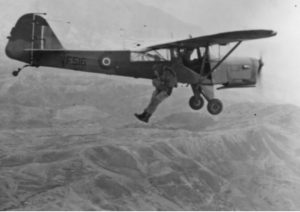 Right: VF516 dropping a special forces soldier in Korea during the Korean War
Right: VF516 dropping a special forces soldier in Korea during the Korean War
1913 Flight’s six pilots were from the Glider Pilot Regiment and flew Auster Mark 6’s. In January 1952, they were also given a US Army Cessna L-19A ‘Bird Dog’; in November of that year, they were given an Auster Mark 7.
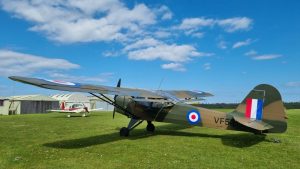 The Cessna was acquired to ferry around VIPs, especially Major General James Cassels of the GOC Commonwealth Division, who is said to have sworn never to fly in an Auster again after he was involved in a crash landing. The 1913 Flight used the Cessna as their VIP transport for the rest of their time in Korea.
The Cessna was acquired to ferry around VIPs, especially Major General James Cassels of the GOC Commonwealth Division, who is said to have sworn never to fly in an Auster again after he was involved in a crash landing. The 1913 Flight used the Cessna as their VIP transport for the rest of their time in Korea.
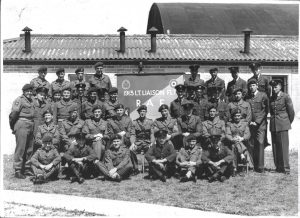 Throughout both Flights’ operations, UN air superiority was maintained. Despite this, both Flights suffered personnel losses as two pilots and two groundcrews were killed. Anti-aircraft fire and artillery shells were the cause of two of these casualties. Two further pilots and a rear observer were shot down and captured. The Commander of 1903 Flight, Major Wilfred Harris MC, was also killed on 2 June 1953, when a damaged American F-84 Thunderjet crashed onto the Fort George airstrip and hit his jeep. On several occasions, US aircraft crashed on the airfield, conveniently located for them to use as an emergency strip.
Throughout both Flights’ operations, UN air superiority was maintained. Despite this, both Flights suffered personnel losses as two pilots and two groundcrews were killed. Anti-aircraft fire and artillery shells were the cause of two of these casualties. Two further pilots and a rear observer were shot down and captured. The Commander of 1903 Flight, Major Wilfred Harris MC, was also killed on 2 June 1953, when a damaged American F-84 Thunderjet crashed onto the Fort George airstrip and hit his jeep. On several occasions, US aircraft crashed on the airfield, conveniently located for them to use as an emergency strip.
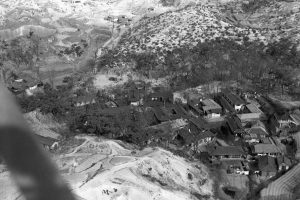 Nearly two years after the 1903 Flight began operations in Korea, a ceasefire was agreed upon between both sides. After this came into effect, the 1903 Flight’s role became focused on visual reconnaissance. Some sorties were carried out over the Demilitarised Zone and the Chinese lines. Both flights remained in Korea for another eighteen months. Over the following year, they were still carrying out photographic sorties, practising artillery shoots, and patrolling the Demilitarised Zone.
Nearly two years after the 1903 Flight began operations in Korea, a ceasefire was agreed upon between both sides. After this came into effect, the 1903 Flight’s role became focused on visual reconnaissance. Some sorties were carried out over the Demilitarised Zone and the Chinese lines. Both flights remained in Korea for another eighteen months. Over the following year, they were still carrying out photographic sorties, practising artillery shoots, and patrolling the Demilitarised Zone.
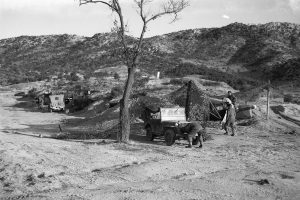 In January 1955, both flights returned to the UK. The role played by the two Flights was crucial to the campaign’s success. The 1903 Flight carried out almost 3,000 Air OP sorties throughout the war, while the 1913 Flight carried out around 9,000. Their valuable contribution can be seen through the many gallantry awards received compared to their size. These include a Distinguished Service Order and several Distinguished Flying Crosses.
In January 1955, both flights returned to the UK. The role played by the two Flights was crucial to the campaign’s success. The 1903 Flight carried out almost 3,000 Air OP sorties throughout the war, while the 1913 Flight carried out around 9,000. Their valuable contribution can be seen through the many gallantry awards received compared to their size. These include a Distinguished Service Order and several Distinguished Flying Crosses.
Exhibition created by Henry Whittington, Archive Assistant, 2021
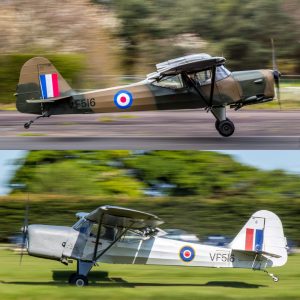 VF516 was in the military silver scheme until April 2023, when she was repainted with her original camouflage and markings that she would have worn in Korea in the 1950s when she was operational. Im sure you would all agree she looks stunning in her new camouflage military colours.
VF516 was in the military silver scheme until April 2023, when she was repainted with her original camouflage and markings that she would have worn in Korea in the 1950s when she was operational. Im sure you would all agree she looks stunning in her new camouflage military colours.
This actual Auster did see active service in Korea in the 1950s. We have photos of it Above showing it in action, dropping special forces soldiers by parachute, and other pictures of operations with 1913 flights that flew over 9000 missions between them. So if you want an introductory flight in this iconic aircraft, click and book above!
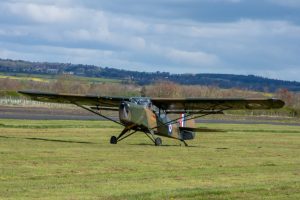 About the Beagle Terrier: The 1960s was a time of consolidation among the companies which formed the British aircraft industry. Pressed Steel Ltd merged with Auster Aircraft Company (Rearsby) and F.G. Miles Ltd. (Shoreham) in an attempt to form a viable manufacturer of light aircraft, known as BEAGLE (British Executive & General Aviation Limited). The attempt was doomed from the start. The two constituent companies had widely different design philosophies and histories. One turned out steel-tube/fabric-covered, high-wing aircraft, renowned for their slow-speed handling; the other built fast (then faster) racing and record-breaking wooden machines and had been thwarted in their attempt to build the world’s first supersonic aircraft (Miles M.52). The two former companies staggered on for a few years as separate divisions – Beagle-Miles and Beagle-Auster, but the writing was on the wall.
About the Beagle Terrier: The 1960s was a time of consolidation among the companies which formed the British aircraft industry. Pressed Steel Ltd merged with Auster Aircraft Company (Rearsby) and F.G. Miles Ltd. (Shoreham) in an attempt to form a viable manufacturer of light aircraft, known as BEAGLE (British Executive & General Aviation Limited). The attempt was doomed from the start. The two constituent companies had widely different design philosophies and histories. One turned out steel-tube/fabric-covered, high-wing aircraft, renowned for their slow-speed handling; the other built fast (then faster) racing and record-breaking wooden machines and had been thwarted in their attempt to build the world’s first supersonic aircraft (Miles M.52). The two former companies staggered on for a few years as separate divisions – Beagle-Miles and Beagle-Auster, but the writing was on the wall.
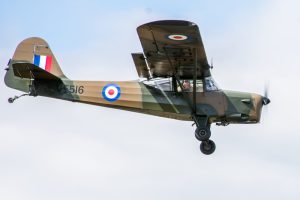 The Auster A.O.P. 6 had been the standard Air Observation Post aircraft of the British Army postwar, with the usual pattern of the Squadrons being constituted within the RAF – and manned by RAF servicing personnel – but having Army pilots. VF571 was an A.O.P. 6, which saw service with 662 Squadron (3rd Regiment, Army Air Corps) and 651 Squadron (5th Regiment, AAC). 651 was originally 651 AOP Sqn and was based at Debden, Essex, then with 3rd Division, Army Aviation HQ at AAC Middle Wallop, Hampshire.
The Auster A.O.P. 6 had been the standard Air Observation Post aircraft of the British Army postwar, with the usual pattern of the Squadrons being constituted within the RAF – and manned by RAF servicing personnel – but having Army pilots. VF571 was an A.O.P. 6, which saw service with 662 Squadron (3rd Regiment, Army Air Corps) and 651 Squadron (5th Regiment, AAC). 651 was originally 651 AOP Sqn and was based at Debden, Essex, then with 3rd Division, Army Aviation HQ at AAC Middle Wallop, Hampshire.
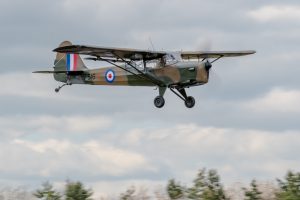 The A.O.P. 6 (and its trainer versions, the T.7 and T.10) was a very successful type, seeing service with the RCAF, Belgian Air Force, Royal Hong Kong Auxiliary Air Force, South African Air Force, and the Arab Legion Air Force. The advent of the Auster A.O.P. 9 in 1955 meant that the A.O.P. 6 was surplus, and many were sold off.
The A.O.P. 6 (and its trainer versions, the T.7 and T.10) was a very successful type, seeing service with the RCAF, Belgian Air Force, Royal Hong Kong Auxiliary Air Force, South African Air Force, and the Arab Legion Air Force. The advent of the Auster A.O.P. 9 in 1955 meant that the A.O.P. 6 was surplus, and many were sold off.
A number of these aircraft were acquired by Auster and reworked into two basic types: the Auster 6A Tugmaster – a glider tug and utility type, and the Auster 6B – designed as a luxury three-seater. After the Beagle merger, the Auster 6B became known as the Beagle A.61 Terrier 1. 18 of these had been produced, with the first conversion flying from Rearsby on 13th April 1961.
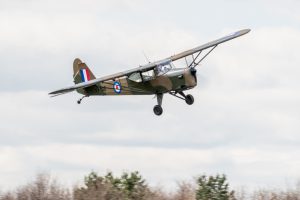 They were followed by the modified Terrier 2 (45 built), but it was too little, too late, and the Auster’s name faded from view. Sadly, the whole Beagle enterprise followed in 1969, and the British production of light aircraft (De Havilland had ceased making light ‘planes after the Chipmunk) virtually ceased.
They were followed by the modified Terrier 2 (45 built), but it was too little, too late, and the Auster’s name faded from view. Sadly, the whole Beagle enterprise followed in 1969, and the British production of light aircraft (De Havilland had ceased making light ‘planes after the Chipmunk) virtually ceased.
Below is the log book from 1954 showing one day the pilot did 14 para drops with the US Special Forces plus other historical items courtesy of
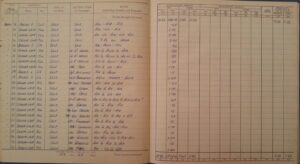
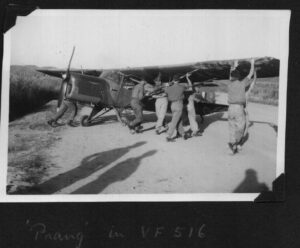
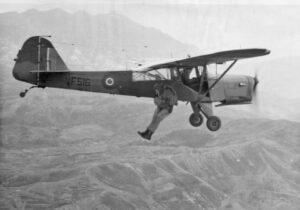
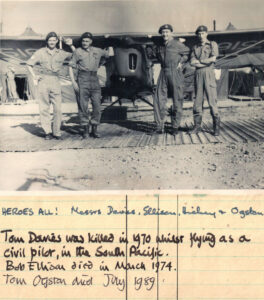
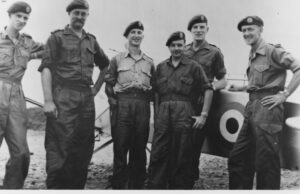
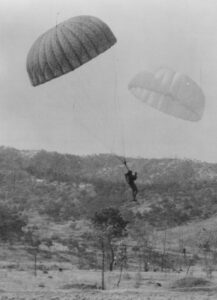
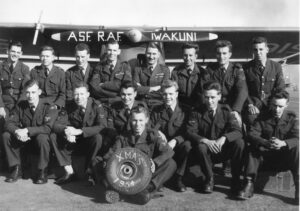
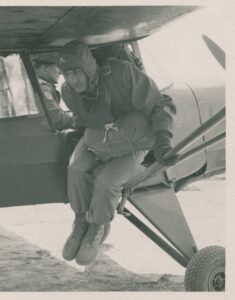
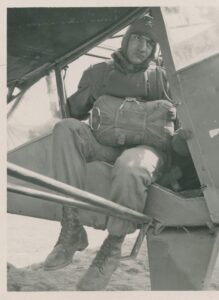
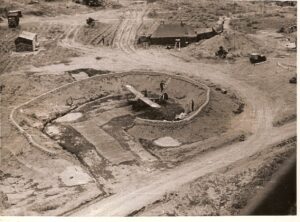
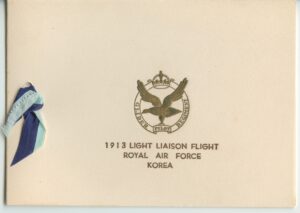
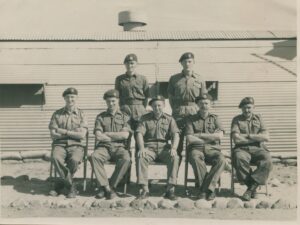
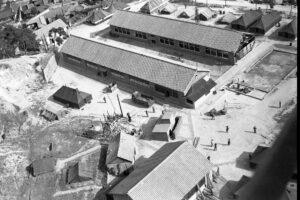
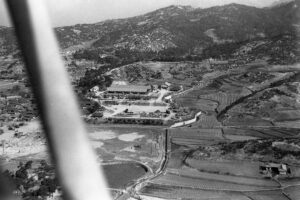

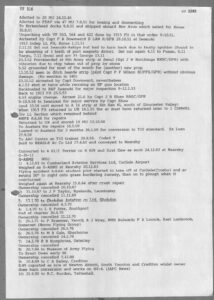
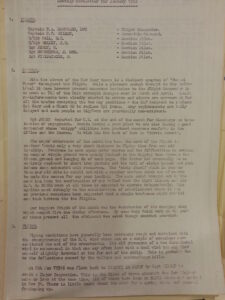
Owner History:
| VF516 | Royal Air Force | 24.10.46 | Left Fleet |
| G-ASMZ | Cumberland Aviation Services Ltd | 04.12.63 | Left Fleet |
| G-ASMZ | John Patrick Taylor | 31.10.67 | Left Fleet |
| G-ASMZ | Shobdon Aviation Company Ltd | 13.01.70 | Left Fleet |
| G-ASMZ | Louis Erek Rotter | 01.04.70 | Left Fleet |
| G-ASMZ | The Heron Flying Group | 25.01.71 | Left Fleet |
| G-ASMZ | Michael Arthur Gale | 26.05.76 | Left Fleet |
| G-ASMZ | Robert Basil Humphries | 14.02.78 | Left Fleet |
| G-ASMZ | Museum of Army Flying | 20.07.84 | Left Fleet |
| G-ASMZ | Charles Anthony Bailey | 10.04.89 | Left Fleet |
| G-ASMZ | Robert Clive Burden | 25.07.90 | Left Fleet |
| G-ASMZ | Brinley Andrews | 24.08.00 | Left Fleet |
| G-ASMZ | Folland Aircraft Ltd | 04.08.16 | Left Fleet |
| G-ASMZ | Samuel Woodgate | 20.02.19 | Left Fleet |
| G-ASMZ The Auster AOP-6 Group | |||
https://www.britmodeller.com/forums/index.php?/topic/234952014-auster-aop-67-in-korea/